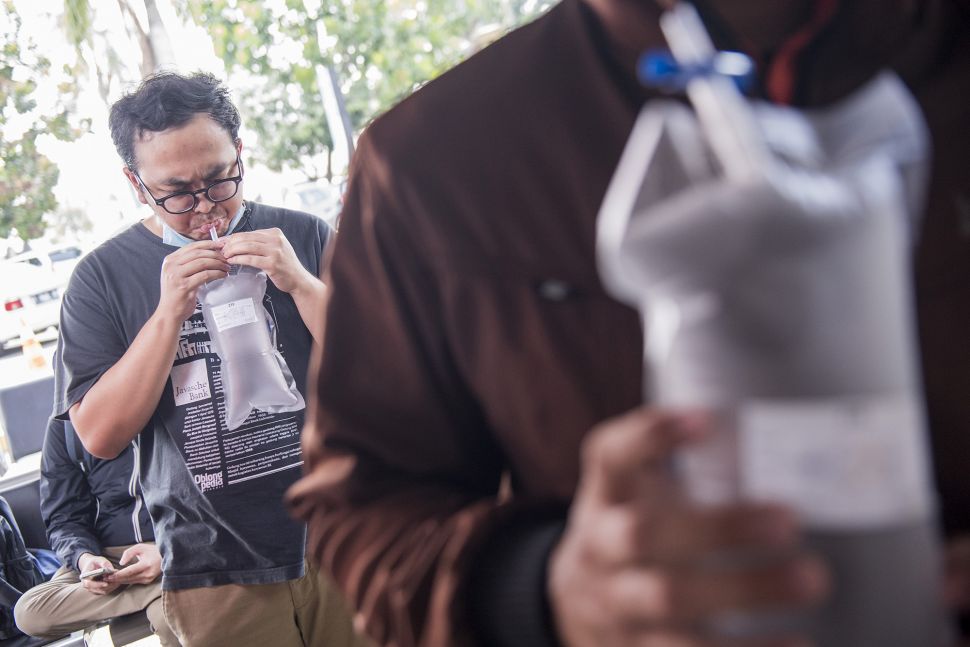Tulisan opini saya di The Jakarta Post pada Hari Tuberkulosis Dunia, 24 Maret 2017.
Link asli di sini.

Who should be blamed for Indonesia being ranked second in tuberculosis (TB) incidence worldwide? Despite the achievement toward the Millennium Development Goals (MDGs) in 2015, the declining incidence of TB has shown a slowing pace. And, the question remains: will we achieve the target for zero TB incidences in 2035?
Despite it being 135 years since Robert Koch announced Mycobacterium tuberculosis as the cause of TB the spread of the disease remains unabated. The current situation is quite similar to the age before Koch’s discovery.
People at that time blamed poverty and crowded, congested housing, particularly in cities. They depicted the relationship between TB and poverty beyond scientific discussion by putting it into literature and drama. The term “consumption” arose in literature, such as Les Miserables, to describe how the disease spread among the poor.
Current scientific findings tend to reinforce what we have already known for centuries, and define TB as a “social disease” that demands measures in the socio-economic perspective.
Describing TB as a “social disease” is neither to blame poverty as the only determinant of TB spread, nor to reframe negative stigma in the community.
However, the problem is apparent. TB and household finances have a reciprocal relationship. Poverty creates the risk of TB infection and risks hampered access to healthcare services resulting in delayed diagnosis and treatment.
Poverty also increases the risk of not adhering to treatment because of high non-medical costs.
Although the government provides free TB drugs in community health centers (Puskesmas) or other providers within the DOTS linkage — a program under the subdirectorate of tuberculosis, low-income citizens have to deal with financial hardship when accessing healthcare services. They still have to spend on transportation and food costs while accessing health care.
In urban cities, people may be able to afford low-cost transportation.
However, those living in rural areas where public healthcare services are limited must spend more on motorcycle taxis, boats or even ferries to see doctors and access laboratory facilities.
After diagnosis, poor patients, those who live on less than US$1.90 per day, are required to visit their doctor for routine treatment. The problems double if the disease causes a deterioration in the patient’s physical capability. Eventually, as the impact of the disease, they lose jobs and hence income.
Loss of earnings leads them to catastrophic health costs — a term to describe costs exceeding their family financial capacity.
In a recent study, approximately 36 percent of TB patients and 83 percent of drug-resistant TB patients had to face catastrophic costs. The percentage rose to 96 percent among low-income families.
Poverty is therefore a direct impact of TB. The disease plunges patients into a poverty trap. Even worse they may endanger others and their communities. If they quit treatment as a result of financial hardship, higher morbidity and mortality rates will follow.
The disease will spread to the surrounding community, in particular if a patient lives in a slum or densely populated area.
The economic burden as an impact of TB is certainly heavy.
That is why the World Health Organization has addressed this issue by setting a target of “zero incidences of TB-affected families experiencing catastrophic costs” in 2020. This is a critical indicator in achieving zero-TB incidence in 2035 but, how can we reach it within next three years?
The government has made efforts but needs to combine clinical management improvements, promotion of clinical adherence and the provision of socioeconomic support.
The policy of providing travel vouchers or nutritional supplements for TB patients has been carried out but has changed over the years. It also depends on the budget provided by donors.
Improvements are needed. Cash transfers, as revealed in China and Mexico, are worthwhile in improving treatment adherence and outcome.
But, these should be combined with behavioral requirements that, for example, require patients to participate actively in health education and TB case detection in communities. This will boost the preventive measures, as well as diminish the negative stigma about TB.
Another intervention is providing micro-finance, as some studies in mother-and-child health intervention also show the benefits. TB patients may not have the physical capability to work. Companies may be reluctant to hire them as potential workers, except for menial jobs with low wages. Providing microfinance for small enterprises, therefore, would be a solution, especially for those who have lost their jobs or incomes.
But, the consequence is obvious. The government should consider the budget capacity carefully to ensure sustainability. We do not expect temporary programs. The technical issues should be addressed properly, including how to target beneficiaries, develop selection mechanisms and distribute the incentives. It also demands close monitoring and evaluation before assessing the possibility of scaling up to a national level.
Any strategies other than incentives are surely to be welcomed. We need a comprehensive plan. An “anti-poverty drug” indeed cannot rely merely on the Health Ministry, regional health offices, doctors, nurses or volunteers. We need an active inter-ministerial collaboration to design a crosssector blueprint to combat TB and implement the strategy.
World TB Day today should remind us that eliminating TB is not only about delivering free TB drugs to patients, but how both central and local governments develop strategies to narrow the income gap, improve transportation and geographical access, enhance public access to health services and ensure job and income security for those infected.
We need an active inter-ministerial collaboration to design a cross-sector blueprint to combat TB.
***
The writer is a lecturer in the Medical School of the University of Indonesia and researcher in HEMISPHERE . He is pursuing his PhD at Erasmus University Medical Center Rotterdam, the Netherlands, focusing on universal health coverage and its impact on tuberculosis.








